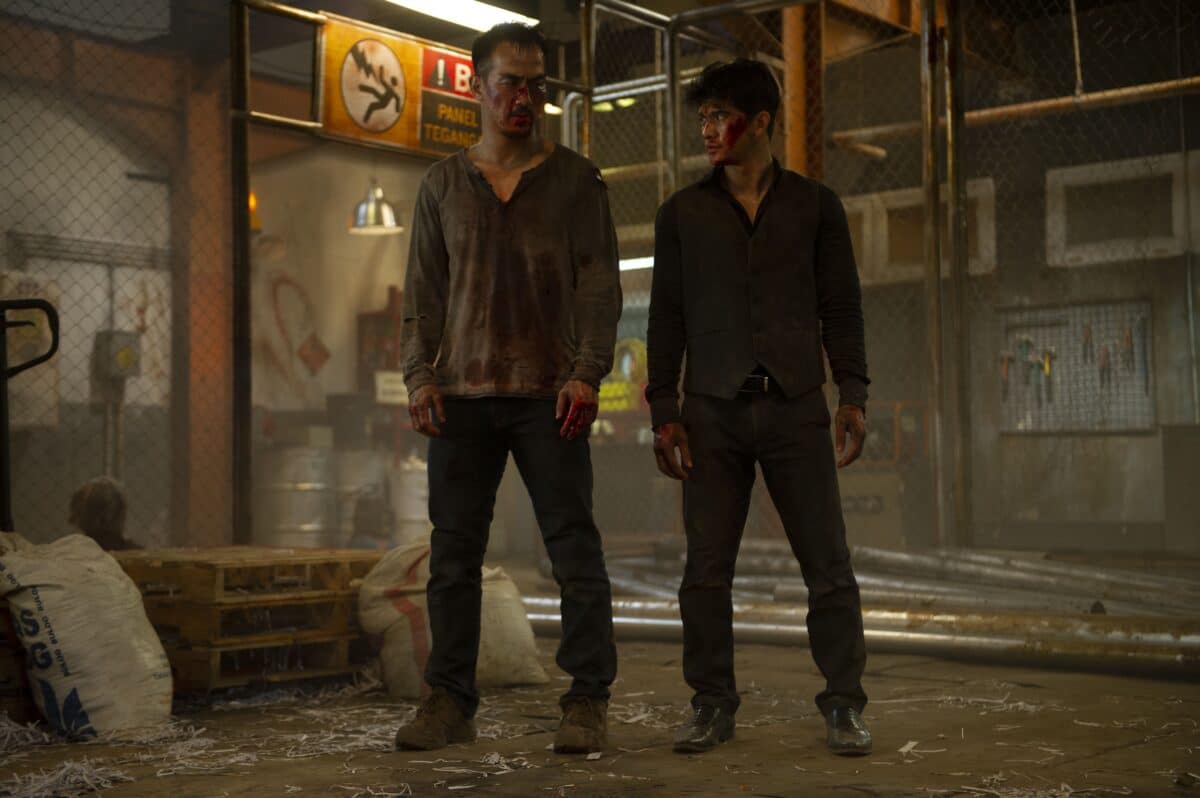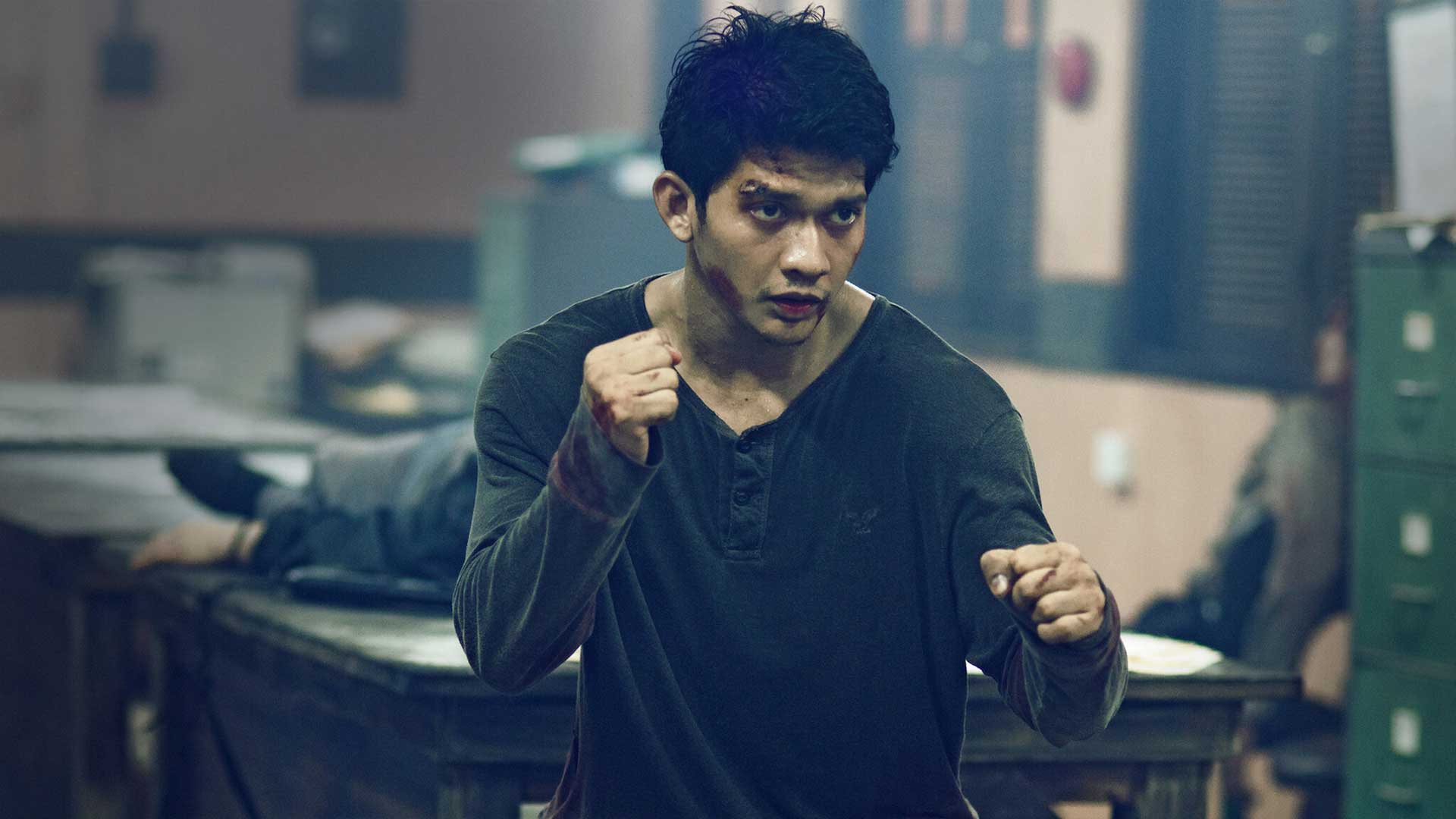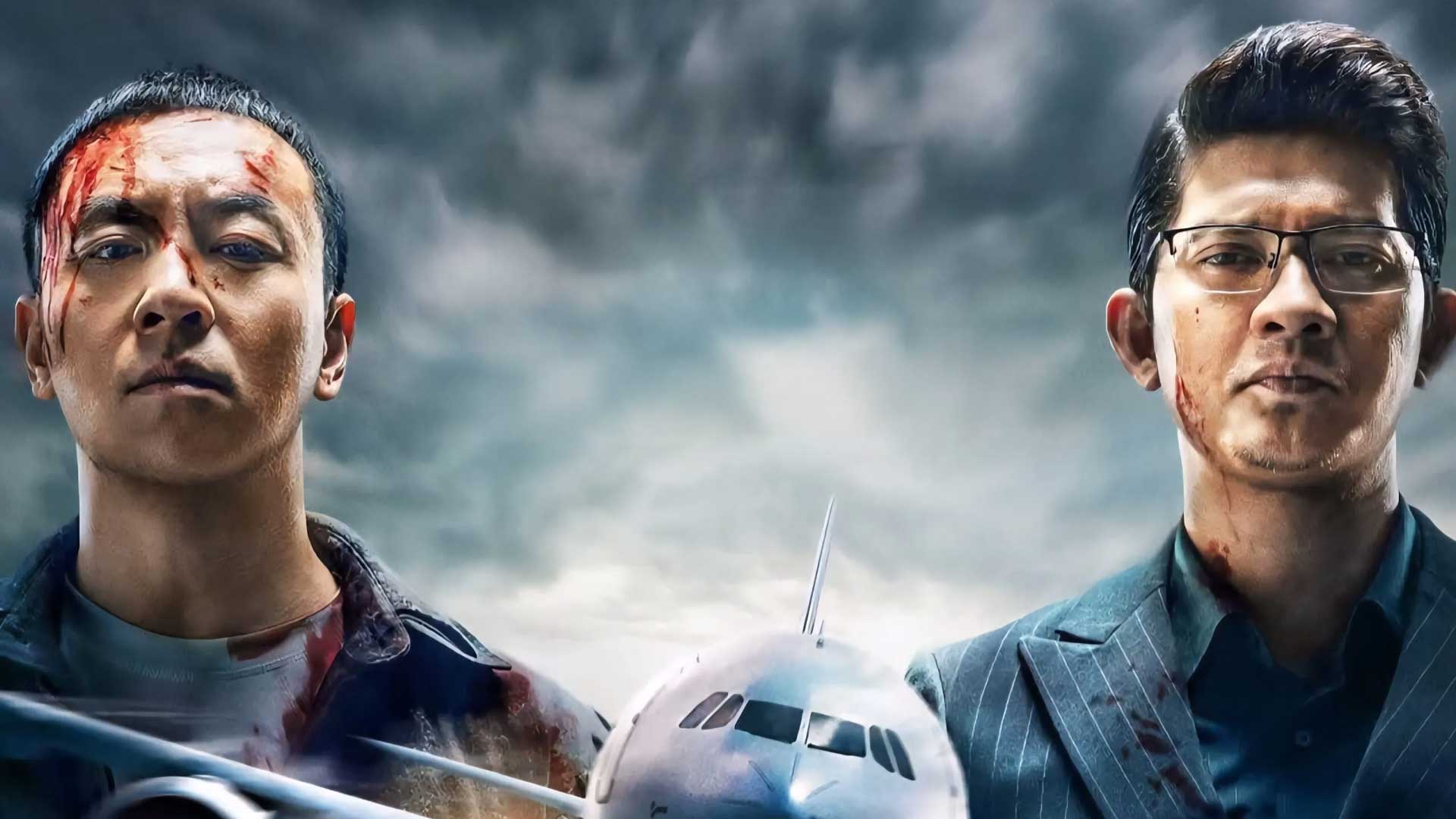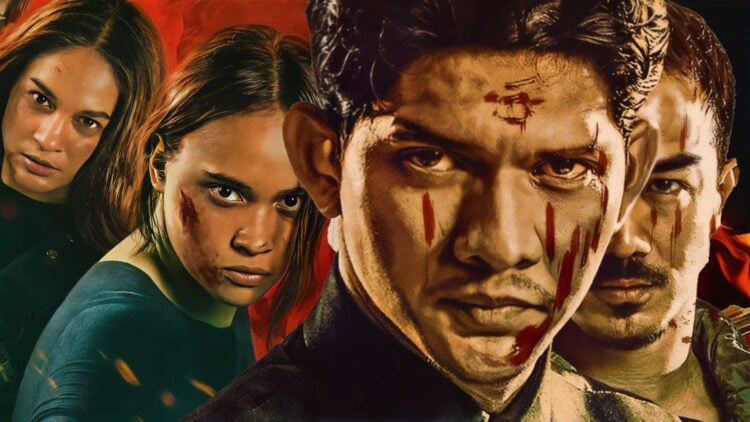When one thinks of Indonesia, a tropical, captivating Southeast Asian island paradise springs to mind for many, and for many more, the image of a film industry producing some of the most heart-stopping fight choreography on the planet is the first thing they think of. The latter has been the growing reputation of the Indonesian action film industry for the last decade and a half, thanks significantly to the popularity of martial arts films Merantau, The Night Comes For Us, The Shadow Strays, and, of course, The Raid movies. Even better for action fans enamored with the Indonesian style of action is that its visibility and influence have been noticeably expanding outside of Indonesia itself.
How many enthralling martial arts fight sequences in recent memory have clearly drawn an influence from The Raid films? How many Hollywood-produced action films have brought Indonesian talent aboard and let them go to work? The answer to both is “A lot”, and there’s also a strong indication of the spread of Indonesian action growing even more expansive than ever before the end of this calendar year. Taking a look back over the trends in action filmmaking and fight choreography from about 2010 onward, it is plain to see why Indonesian-style action is conquering the world, and why lovers of action are so welcoming of that trend.
Indonesian Action Introduced Silat To The World (& The World Is Trying To Catch Up)

It’s often a tradition in martial arts films to focus on a specific discipline and the culture around it, which often provides a launching pad for the art’s wider mainstream recognition. The Karate Kid did it for karate, Ong Bak did it for Muay Thai, Ip Man did it for Wing Chun kung fu, and so on. Indonesia’s art of Pencak Silat got its first big spotlight on the world stage with the one-two-three punch of Merantau, The Raid: Redemption, and The Raid 2 over the course of 2010 to 2014. While the three action hits sent Iko Uwais and many of the other stars to martial arts movie stardom and made director Gareth Evans a legend among action filmmakers, they also made Silat a new, captivating, and impossible-to-ignore martial art in the action movie world.
While Silat is a staple of Indonesian action movies, its influence and presence have become increasingly evident in Western action movies, as well. Ben Affleck specifically trained in Pencak Silat for his role in The Accountant movies, while it’s also become increasingly commonplace for Indonesian martial arts talent to bring their skills to the West as both on-screen performers and fight choreographers. As seen in the likes of the Skyline franchise, Triple Threat, John Wick: Chapter 3 – Parabellum, and Netflix’s Wu Assassins, Silat is becoming as prominent and heavily utilized in action filmmaking outside of Indonesia as it is locally.
Indonesian Action Is Incredibly Visceral

Adding to the cinematic beauty and power of Silat as an on-screen martial art, Indonesian action movies showcase their fight scenes with an intensity that is almost without compare in modern times. The Raid movies in particular set a tone of action in which hits are felt like bolts of lightning, and bladed weapons frequently enter the equation as the weapon of choice. Headshot, The Night Comes For Us, and The Shadow Strays learned the lessons of The Raid films well, making their fight scenes even more viscerally impactful with punches that are never pulled.
On the other side of that dynamic, the Silat-based fight choreography of the Indonesian action scene also consistently highlights the fluidity and beauty of the martial arts; their fight scenes are fast-paced ballet in which the action and the fighters at the heart of it flow like water. At the same time, what Indonesian action has brought a renewed emphasis on is leaning into the sheer danger and pain that comes with it. The yin-and-yang of fight choreography has always been making fight scenes that are as gorgeous and captivating as possible, and simultaneously emphasizing the power and impact of the strikes being exchanged. Indonesian action has not only consistently struck that balance flawlessly, but done so in a way that has made action filmmakers and fight choreographers around the world take notice. Even in a franchise that has ballooned to such laughably cartoonish heights as the Fast and Furious movies, the actual fight scenes show a deference to what Indonesian action has made popular with an adherence to the laws of physics and an emphasis on pure physical skill that is the total opposite of the saga’s gravitation to space cars and other silliness. There’s also another element of Indonesian action that has proven to be highly influential in ways that many might find surprising.
Indonesian Action Brings A Touch (Or A Lot) Of Horror Elements To The Mix

Look back at reviews and early reactions to The Raid from 2012, and odds are pretty solid you see it being described as an action-horror combo or a survival horror movie. The integration of horror movie elements (especially gore) has been very commonplace in Indonesian action movies from The Raid films on, and Timo Tjahjanto in particular has been a driver of that action-horror blend. As seen in Headshot (which he co-directed with Kimo Stamboel), The Night Comes For Us, and The Shadow Strays, you’d be forgiven if you dropped in any of them midway through and thought you had pulled up a slasher movie. The use of bladed Silat weapons along with many protagonist and antagonist characters being outright assassins often means that Indonesian action carries a darker tone that could fit right into a horror movie, while the tenor and intensity of their fight scenes would also be as well suited for a Saw movie as one geared toward martial arts action.
Gareth Evans’ brought a touch of the horror elements of The Raid movies into his British TV series Gangs of London and his 2025 Netflix hit Havoc, both of which combine the impactful action in the forefront and suspense horror undertones to great effect. Timo Tjahjanto looks poised to do the same with his forthcoming Hollywood debut of Nobody 2 and The Beekeeper 2, but one area where the Indonesian brand of action-horror symbiosis has been surprisingly influential has been in the superhero genre. The Batman fight scenes of recent memory like the warehouse brawl of Batman v Superman: Dawn of Justice and the train station smackdown of The Batman portray the Dark Knight as both a righteous masked warrior with tremendous martial arts skills, and one who casts an aura of fear in the beatdowns he delivers. Netflix’s Daredevil and the Disney+ sequel series Daredevil: Born Again also bring a distinctly Indonesian-style quality to their fight choreography, and one that also has a horror movie feel in Matt Murdock’s unleashed rage and the distinctly Raid-influenced one-shot fight scenes that have become The Man Without Fear’s calling card.
That cross-pollination of Indonesian-style action and horror has also gone in the opposite direction with Timo Tjahjanto’s work on the V/H/S franchise. Specifically, Tjahjanto’s segments “Safe Haven” in V/H/S/2 (co-directed with Gareth Evans)and “The Subject” in V/H/S/94 integrate spellbinding action into their grimy, unnerving horror movie premises. While combining action and horror has been done plenty of times before, the Indonesian action film industry might well be able to lay claim to perfecting it.
Indonesian Action Is About Blend With Another Style Of Asian Action

While Indonesian action has found a growing space to thrive in the West, 2025 might also be the year in which it combines with one of the most popular styles of action fight choreography known to man, that being Chinese and Hong Kong-style action. After jumping into multiple Hollywood projects, Iko Uwais will also be seen later this year in the Chinese action movie Wings of Dread alongside rising local star Ashton Chen, the two set to battles terrorists aboard a plan with the movie releasing on the streaming platform iQiyi later this year. The streaming age has already proven to be extremely fruitful for fans of Chinese action harkening back to the Hong Kong golden age, and the idea of Iko Uwais bringing his Silat skills to Wings of Dread promises a Chinese-Indonesian action blend that will surely spark plenty of excitement among lovers of both styles.
Additionally, fans of Hong Kong action are also eagerly awaiting the release date for the upcoming ensemble The Furious, which already promises to be a dream come true for martial arts fans and one is also bringing the DNA of Indonesian action from its home territory into Hong Kong. Directed by Donnie Yen’s frequent fight choreographer Kenji Tanigaki, The Furious unites a Pan-Asian ensemble that includes Xie Miao, Joe Taslim, Yayan Ruhian, Jeeja Yanin, and Brian Le in its tale of a Miao’s Konggu on a mission to rescue his kidnapped daughter and finding an ally in Taslim’s Navin. The on-screen talent of The Furious and Tanigaki’s long career crafting action in Hong Kong movies together make The Furious a must-see for action fans and then some (to say nothing of reported plans for The Furious to continue as an ongoing franchise, per Variety). However, presence of Indonesian action heroes Joe Taslim and Yayan Ruhian also speaks to the role of Indonesian-style fight choreography in The Furious as a blend of Chinese, Thai, and Indonesian action that’s being sold a modernized throwback to Hong Kong’s action heyday. With Wings of Dread and The Furious bringing aboard Indonesian action movie legends, the expansion of Indonesian action could finally reach its global pinnacle in 2025, an achievement that action fans will undoubtedly have cause to pop champagne for and celebrate the growing influence of Indonesian action for years to come.








Discussion about this post